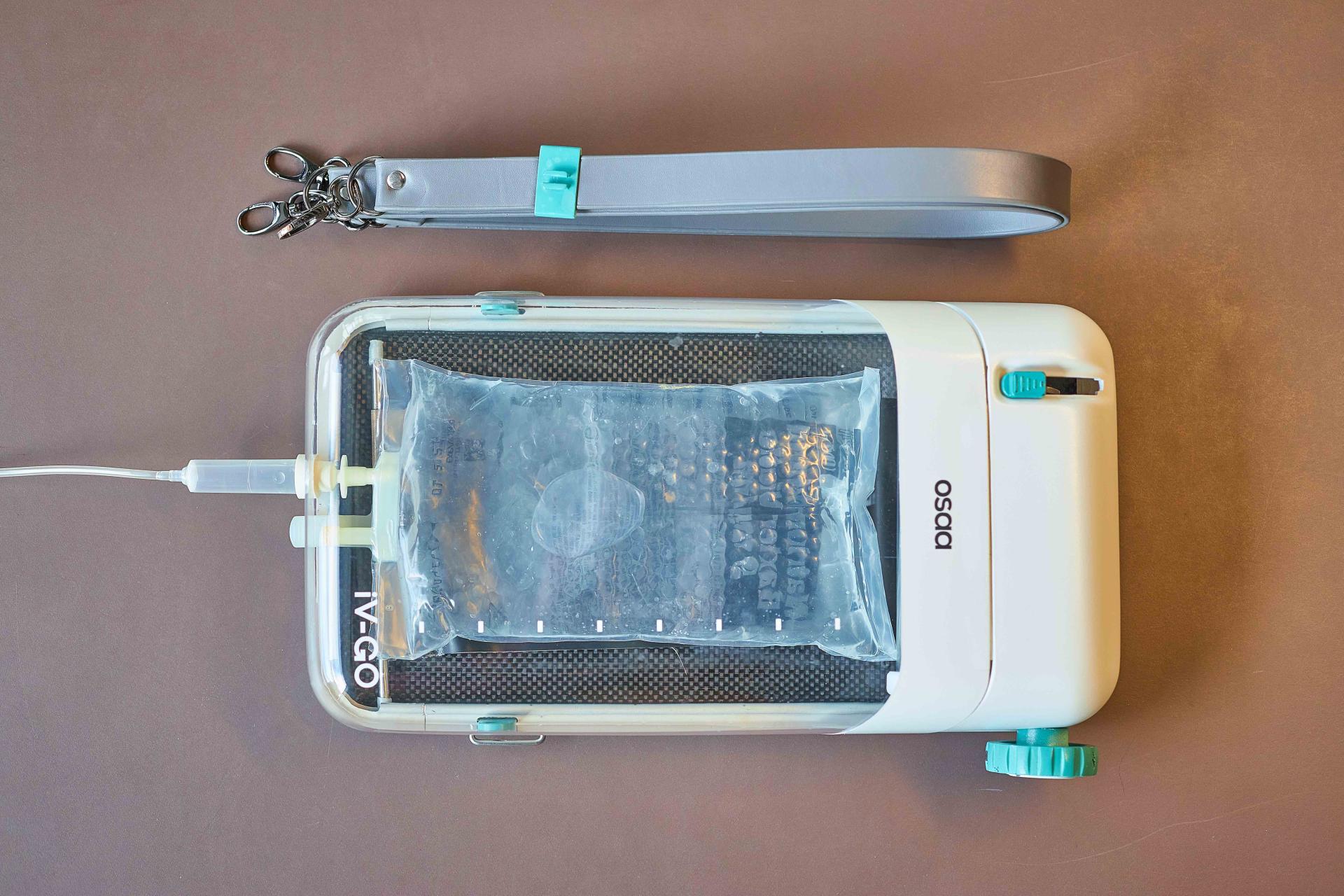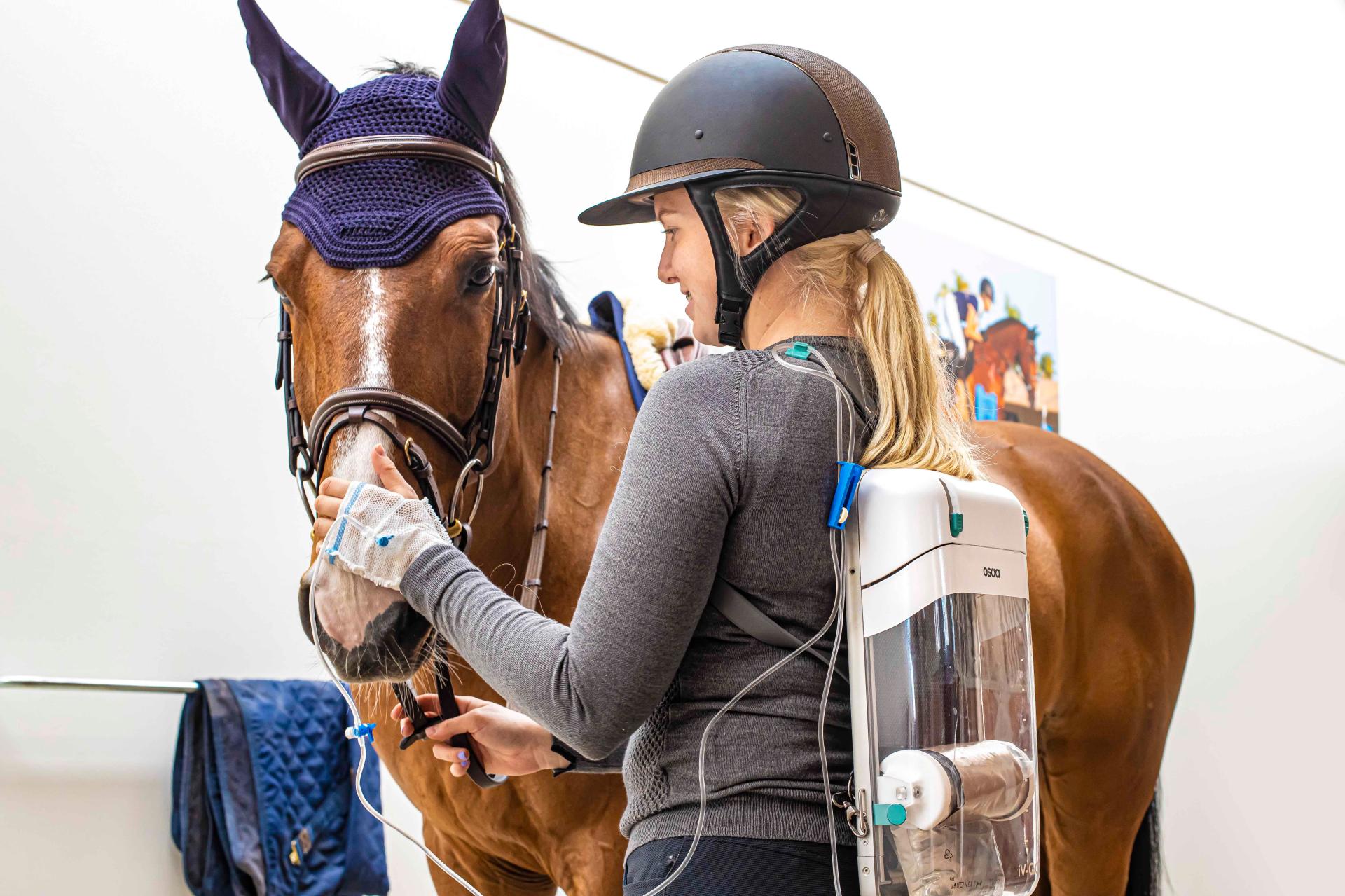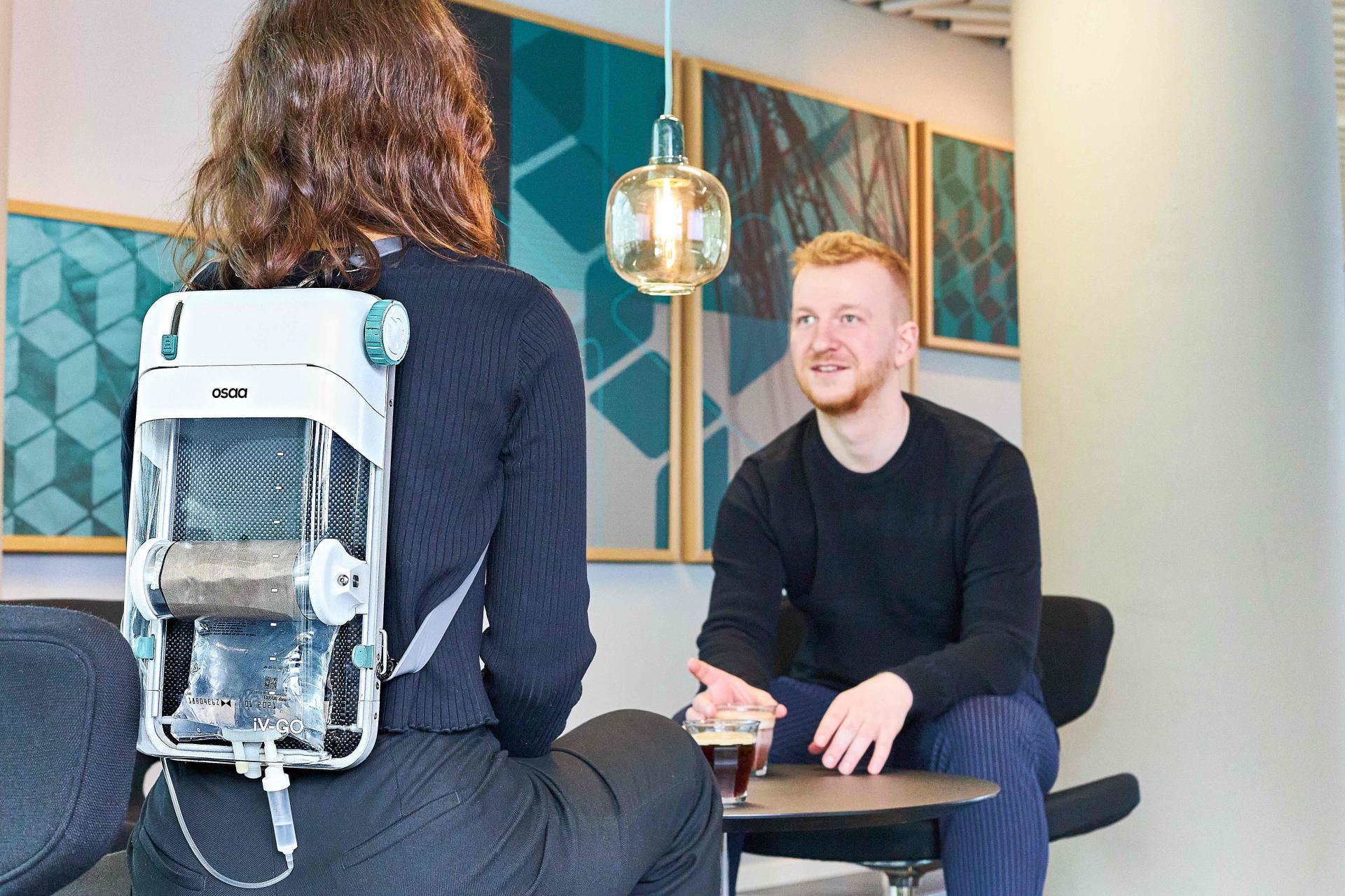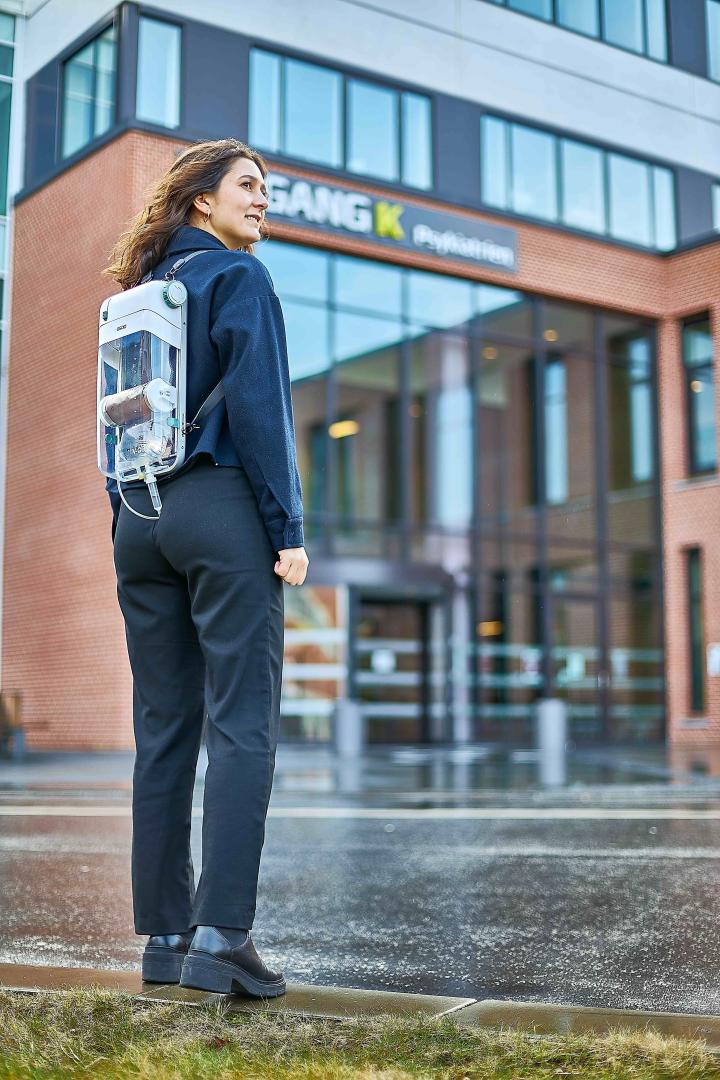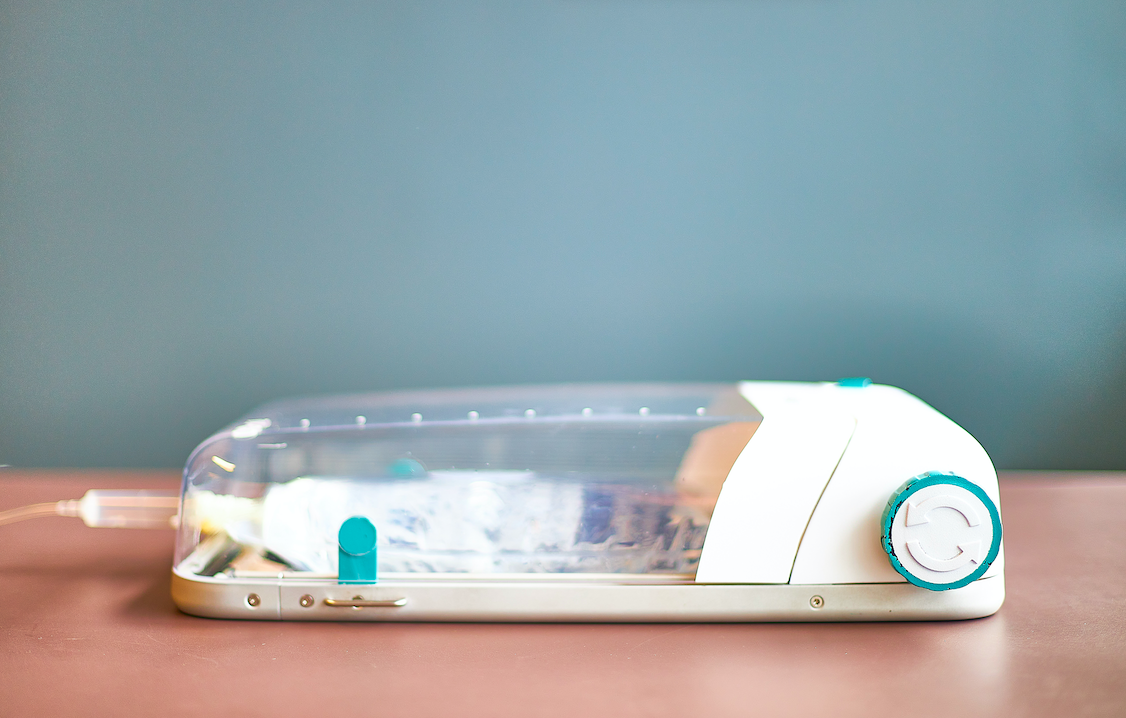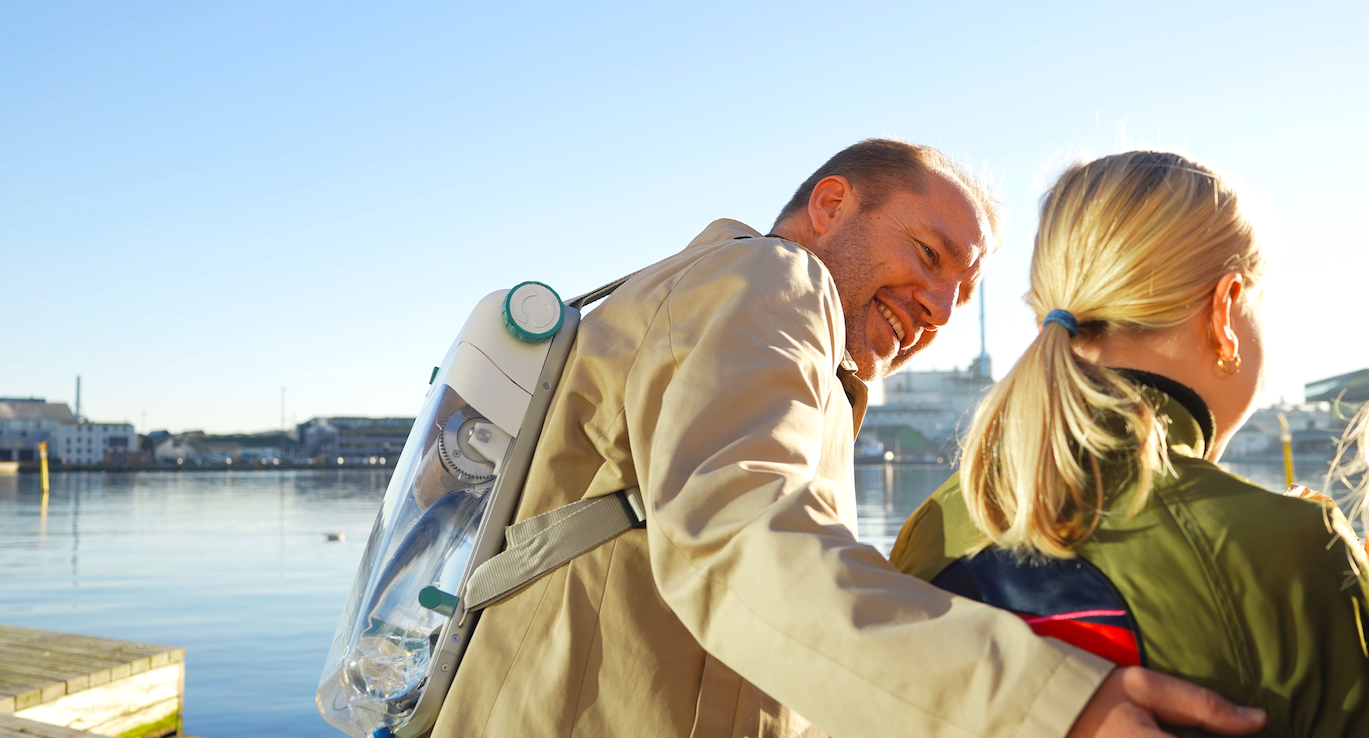iV-GO Mobile & Mechanical IV Solution
Basic information
Project Title
Full project title
Category
Project Description
iV-GO ends the dependence on hospital beds and drop racks to receive iV-treatment, allowing treatment on the go, in hospital or in the patient’s own home - even outdoors, promoting independence, dignity and mobility. Even with a full bag of liquid, iV-GO weighs less than a laptop shoulder bag. It is fully developed, tested and validated by doctors, nurses and patients, compellingly designed and easy to use, encouraging patients to move, reducing treatment costs and the length of hospitalization.
Project Region
EU Programme or fund
Description of the project
Summary
The world’s first portable, purely mechanical IV solution, ensuring constant release of IV fluids while the patient enjoys the empowerment of independence, dignity and mobility. Patented, novel and innovatively designed, it enables patients to be mobile during treatment. iV-GO contains no electronics and does not depend on battery lifetime, hence better suited for lengthy treatments. iV-GO was conceived by OSAA Innovation’s founder Ahmed Hessam, based on own experiences being hospitalized numerous times. During treatment in 2009 at Denmark's National Hospital, he observed a girl playing outside while her mother was holding an IV bag above her, so that the she could receive the required treatment. It occurred to Ahmed how restricted patients are during IV treatment and he decided to develop a mechanical, mobile, patient-friendly, de-stigmatizing and inexpensive alternative; the iV-GO.
For around 90% of all hospitalized patients, IV treatment is an inevitable part of the received care. However, existing equipment for such treatment in its current form unnecessarily restricts the mobility of the patients during treatment. The most common solution today is to suspend the IV bag from old-fashioned and often big and bulky IV poles, significantly hindering patients’ mobility. Moreover, as IV-poles are easily identifiable from afar, patients often feel stigmatized.
A Danish study from 2014 showed that a single ward saved 550 bed days, equal to €400,000 over two years, by using 7 electronical mobile infusion pumps. As the mechanical iV-GO is priced at 20-50% of existing infusion pumps (€2,000 - €5,300), while at the same time being more durable and easier to use and maintain, its measurable performance indicators in terms of overall effectiveness are significantly better. Moreover, IV treatments performed in the hospital are up to 10 times more expensive than similar treatments given at home, but are rarely considered a viable alternative due to logistical challenges.
Key objectives for sustainability
The very "tagline" of the UN Sustainable Development Goals is "Leaving no-one behind". A balanced approach to sustainability weighs values like diversity, dignity and empowerment - as embedded in SDG 3 and SDG 10 in particular. People tend to become invisible and "down-graded" when admitted to hospitals or when depending on care over longer time. The inventor of iV-GO personally spent more time in hospitals than most, and at a young age, which inspired him to improve the dignity and independence of patients by empowering them to be more mobile and to allow patients, who are otherwise confined to a hospital bed for the sole reason of receiving iV treatment, to move freely and to enjoy the sensation of being able to the cafe or even go outside without compromising on the vital care that they receive.
iV-GO de-stigmatizes the dependence on receiving IV treatment, something which can radically change the burden of being hospitalized - on on one hand - and which can reduce the need for hospitalization dramatically for many patiens, as the treatment can be received at home or even on the go.
Also in terms of ensuring better care for all, iV-GO contributes to a more sustainable society, as it reduces the costs of IV treatment significantly, freeing funds to the care of other patients or to improving other healthcare services;
“iV-GO improves patient safety, increases usability and reduces the financial costs.” Anne Lis M. Englund, Sc.D. Chief Physician, Holbæk Hospital, Denmark
Finally, as iV-GO is purely mechanical, it reduces the environmental footprint as compared to existing, electronic devices, reguiring batteries, which is significant at disposal in particular. Both for the product itself and for the packaging, a thorough search for environmentally certified materials was undertaken to minimize our footprint. Moreover, all parts going into the product are manufactured in Denmark to reduce freight, but also to support local SMEs to the extent possible.
Key objectives for aesthetics and quality
The ambition of developing a mechanical and portable IV solution has - from the very beginning - been fueled by the desire to also create a product which in itself contributes to de-stigmatization of and enhanced dignity related to the unfortunate situation of being dependend on IV treatment. The key words to that extent have been comfort and aesthetics. One of the main objectives has been to create a lightweight product that is comfortable to wear, as if it were a laptop shoulder-bag or alike - and the actual weight of the final product - including a full IV bag - is less than half of currently existing electronic alternatives. Moreover, the development of iV-GO has been design and purpose driven from the very beginning. Working closely with designers, but also applying design thinking and design methodologies throughout the development process, including a large degree of stakeholder engagement, collaborative design sprints etc., has resulted in a product that - beyond its unquestionable, tested and validated functional advantages, is also visually attractive and extremely easy to operate.
During tests, the user experience has been highlighted again and again - emphasing the radically different feeling of being "seen" and of "normality" compared to any other currently available ode of receiving IV treatment. While this has been the feedback across different user groups and demographics, the contribution of iV-GO has in particular been applauded by young patients, many of whom have characterized iV-GO as downright "fashionable", which only confirms that the original ambition of OSAA Innovation's founder and the inventor of iV-GO - baed on his own experiences - has been fulfilled.
Key objectives for inclusion
iV-GO is developed on the principles of universal design. The product is adaptable to users of all ages, except from the very youngest children, and can be carried as a shoulder-bag or on one's back - or it can be mounted on a bed, chair or wheelchair - leaving it extremely versatile and inclusive in terms of user population.
The most significant advantage as measured by inclusiveness, however, is that iV-GO - as compared to any other existing IV treatment solution - de-stigmatizes the unfortunate situation in which anyone receiving such treatment finds himself or herself.
The mission of OSAA Innovation is to create a better everyday life for all people regardless of age, race, health and economic status. This ambition has driven the development of iV-GO, as it also fuels some of the development projects on the drawing board. Having experienced the sense of segregation on his own body, and having spent more time in hospital than any young person deserves, the mission of OSAA Innovation corresponds directly with the personal and professional aspirations of OSAA's founder, Ahmed Hessam.
The iV-GO has proven both in tests and demonstrations for healtcare personnel as well as hospital patients, that this first product developed by OSAA lives up to the original ambition in full. The feedback is unanimously positive and encouraging, both from a commercial perspective, but also in terms of validating that the very backbone of OSAA is meaningful to many, and that their approach and "raison détre" resonates with both users - broadly interpreted - and with an untapped potential in the helthcare equipment market.
Results in relation to category
The iV-GO development has been underways for some years now, culminating in the first batch of products being delivered in ay 2021.
However, from the very first prototypes were released to be tested, the reception has been overwhelming. In 2017, OSAA was awarded the Welfare Tech Entrepreneur Prize by Aarhus City and Care Ware Next, as well as the Grand Prize in the annual Venture Cup in Denmark, and in 2019, OSAA was awarded the Ernst&Young Entrepreneur Of The Year award in the Life Sciences category, where the iV-GO was labelled an exceptional example of a "freedom and independence technology" needed to transform the healthcare sector.
Hence, while being launched in the market at this very moment in time the impact can only be predicted, but judged by the faith in the product displayed and overtly expressed by investors, grant givers and innovation juries - as well as several different user groups - it surpasses all the expectations on which OSAA was founded and the development of iV-GO was initiated.
How Citizens benefit
The development of iV-GO has been undertaken in close collaboration with students and faculty at Copenhagen University College Nursing School, staff and patients at Zealand University Hospital and with great help from Delta, which is a Danish government-approved R&T Organisation (RTO).
The development process has been deeply anchored in thoroughly tested and validated, user centred and purpose driven design and innovation principles throughout, and step by step, OSAA has worked closely with a wide range of experts within areas like medical treatment and care, design and engineering, testing and quality assurance, sales and distribution.
This open innovation approach is undoubtedly one of the reasons why the product has been universally embraced across user categories, as they have all had an opportunity to influence on the functionality as well as on the "look and feel" of the product.
Innovative character
Existing solutions rely on gravity, as IV bags must be placed 90-100 cm above the patient’s heart to ensure constant force – most often complied with by help of a traditional IV-pole. The IV pole is a reliable, relatively cheap and - seen in isolation – an effective solution. However “movable” at best – rather than actually “mobile”, patients are often confined to the hospital while receiving infusion therapy. This is an issue for patients, nurses and doctors and the hospitals,
Patients often stay in hospital solely because of the dependency on IV infusions, and are often unable to embark on early rehabilitation due to undergoing IV treatment. IV poles are heavy, impractical and logistically challenging, and having patients occupy hospital beds that could be used for patients with a greater need is both expensive and suboptimal from a medical point of view. As the IV bag needs to be 1 meter above heart level, the IV pole has to be quite tall to accommodate all heights, hence also needs to be adjustable, and to ensure that the pole does not tip over (if not attached to a bed), the base with wheels has to be relatively heavy.
A number of mobile IV solutions already exist, but with limited uptake in the hospital sector due to high prices and costs over time of batteries, maintenance etc., being unnecessarily complicated in use, as they are based on electric power sources, battery restrictions entailing limited admission times, and capacity issues, as many devices are limited to 250 ml bags.
iV-GO addresses all these shortcomings. It can be carried as a shoulder-bag or on the back, mounted on a bed, chair or wheel-chair, as long as it is not placed more than 75 cm below the patient’s heart. Contrary to traditional IV treatment systems relying on gravity, iV-GO relies on the constant pressure of the winding mechanism only, meaning that no batteries or charging mechanisms are needed to enjoy the freedom and flexibility of free movement while receiving IV treatment.

